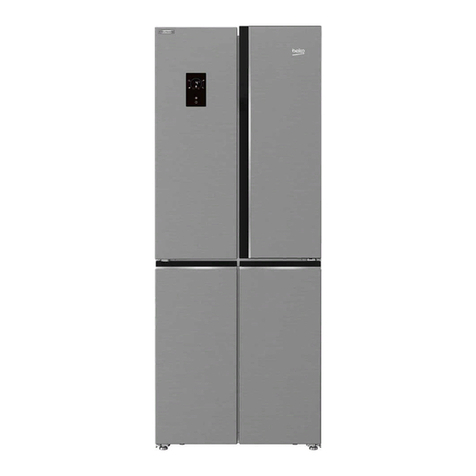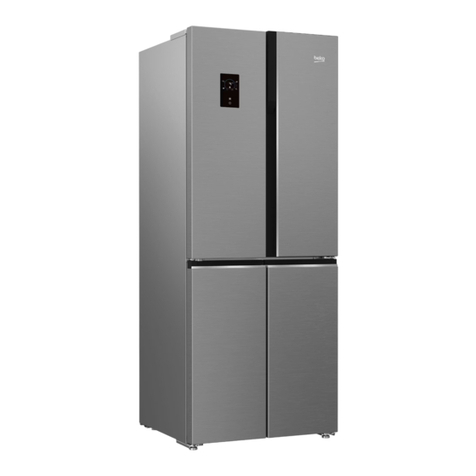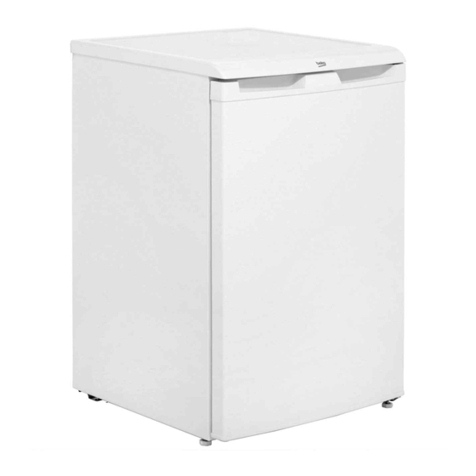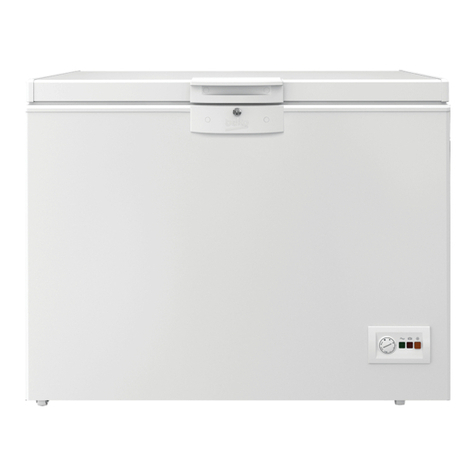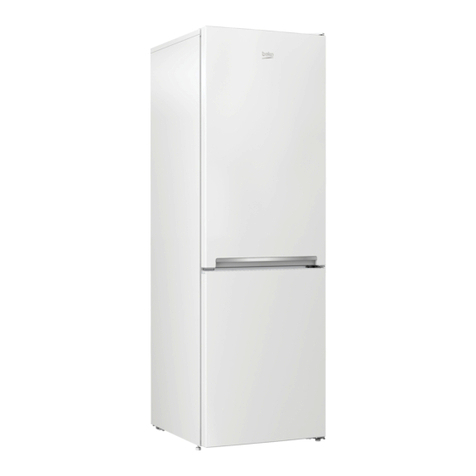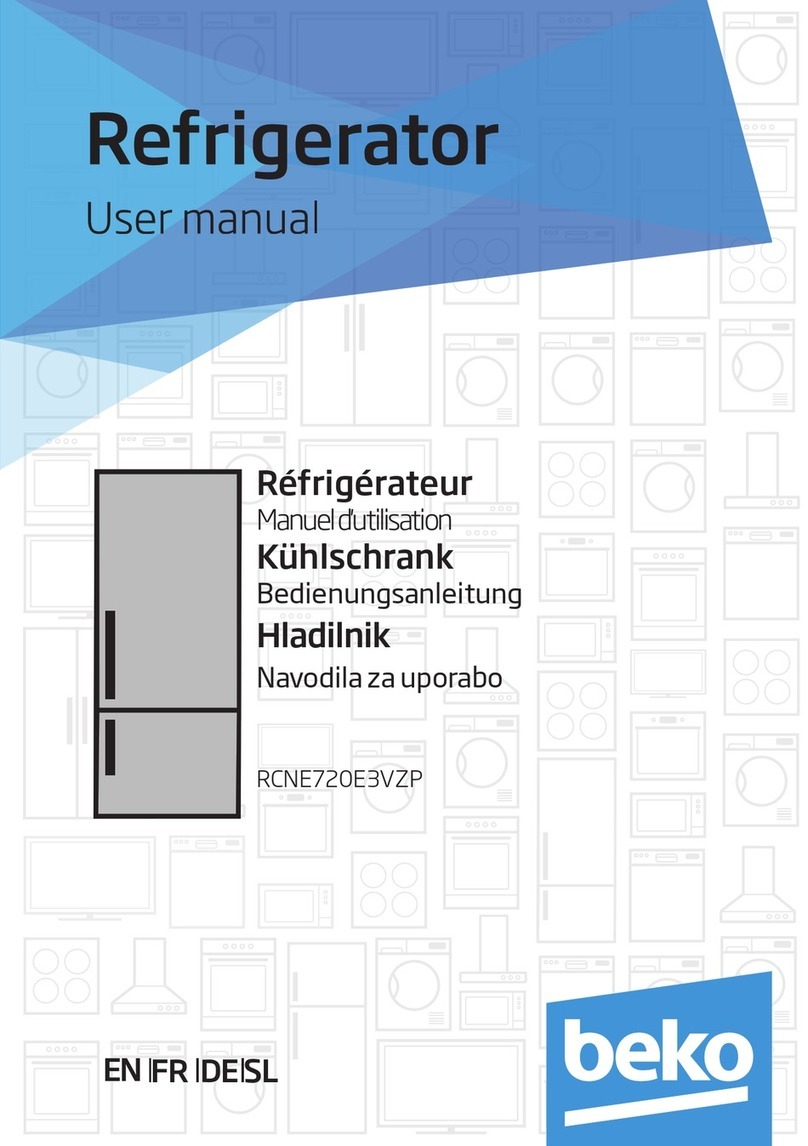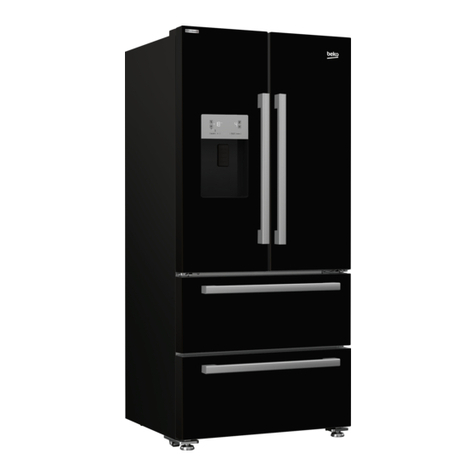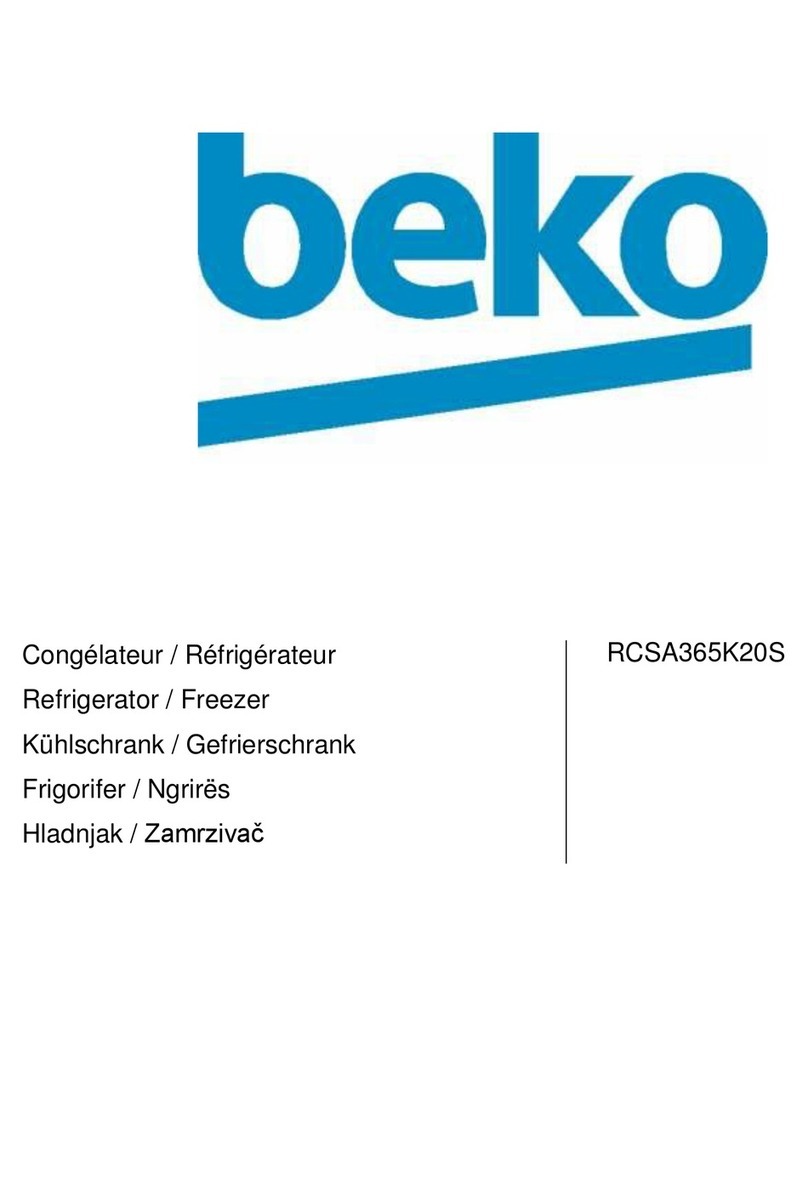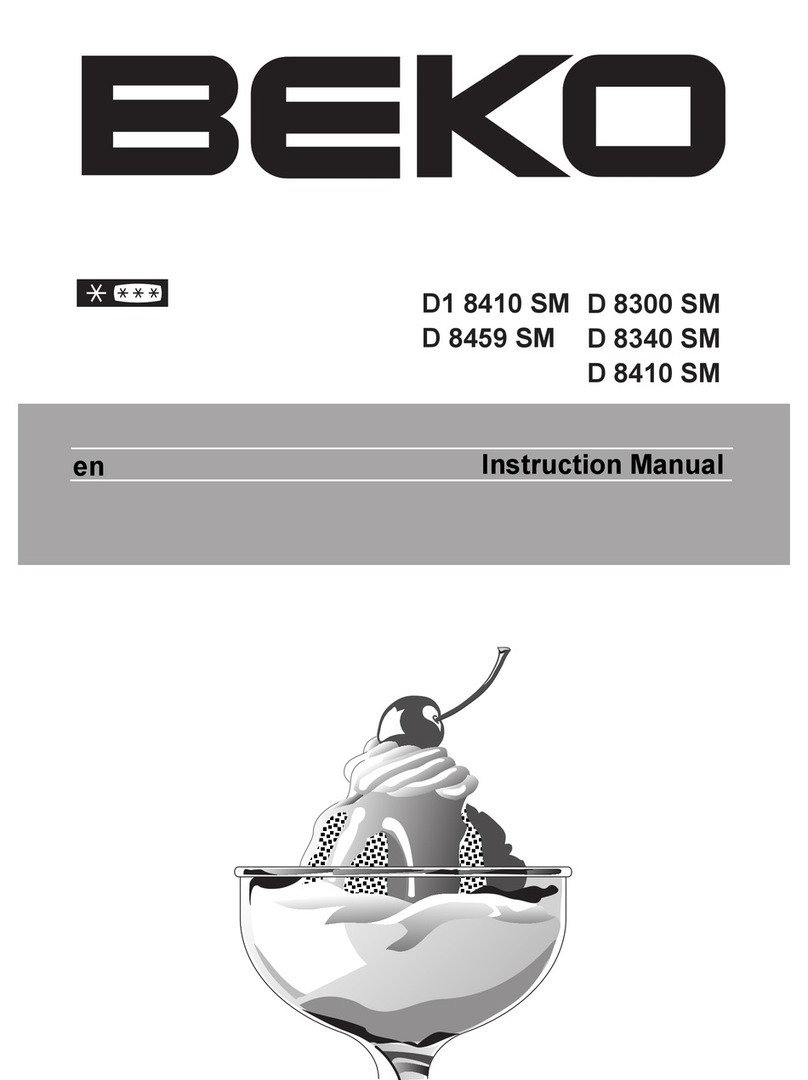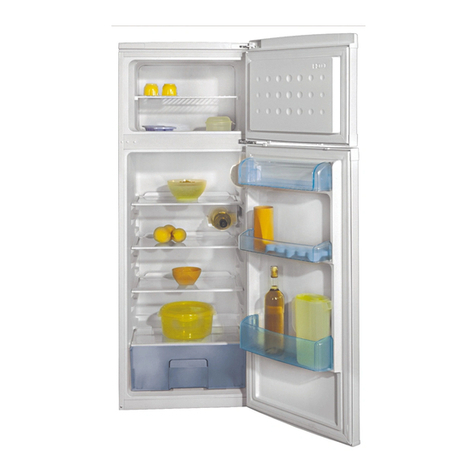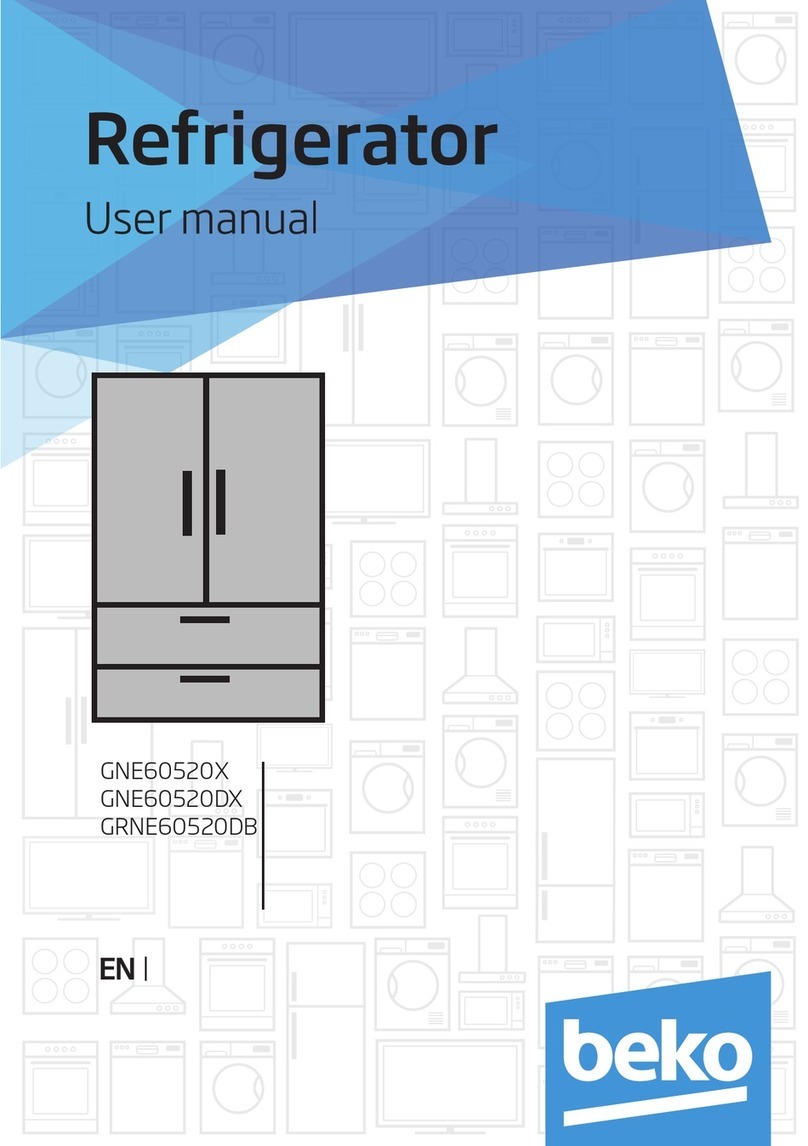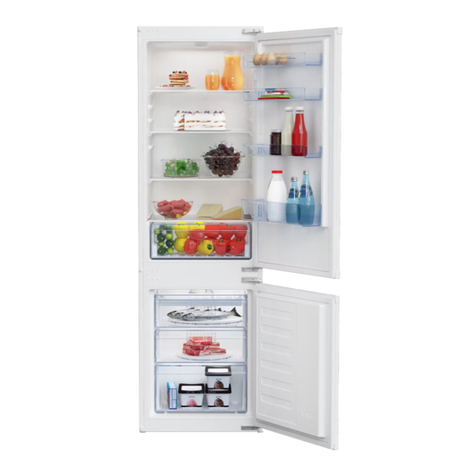
EN
9
3Installation
BPlease remember that the
manufacturer shall not be held
liable if the information given in the
instruction manual is not observed.
Points to be considered
when re-transporting your
refrigerator
1. Your refrigerator must be
emptied and cleaned prior to any
transportation.
2. Shelves, accessories, crisper
and etc. in your refrigerator must be
fastened securely by adhesive tape
against any jolt before repackaging.
3. Packaging must be must
be adequate and the rules of
transportation printed on the
package must be followed.
Please do not forget…
Every recycled material is an
indispensable source for the nature
and for our national resources.
If you wish to contribute to recycling
the packaging materials, you can
get further information from the
environmental bodies or local
authorities.
Before operating your
refrigerator
Before starting to use your refrigerator
check the following:
1. Is the interior of the
refrigerator dry and can the air
circulate freely in the rear of it?
2. Please install the 2 plastic
wedges as illustrated in the figure.
Plastic wedges will provide the
required distance between your
refrigerator and the wall in order
to allow the air circulation. (The
illustrated figure is only an example
and does not match exactly with your
product.)
3. Clean the interior of the
refrigerator as recommended in the
“Maintenance and cleaning” section.
4. Plug the refrigerator into the
wall outlet. When the fridge door is
open, the fridge compartment interior
light will come on.
5. You will hear a noise as the
compressor starts up. The liquid and
gases sealed within the refrigeration
system may also give rise to noise,
even if the compressor is not running
and this is quite normal.
6. Front edges of the refrigerator
may feel warm. This is normal. These
areas are designed to be warm to
avoid condensation
Electric connection
Connect your product to a grounded
socket which is being protected by a
fuse with the appropriate capacity.
Important:
• The connection must be in
compliance with national
regulations.
• The power cable plug must be easily
accessible after installation.
• The specified voltage must be equal
to your mains voltage.
• Extension cables and multiway
plugs must not be used for
connection.
